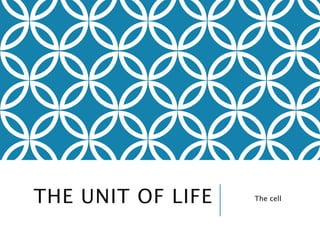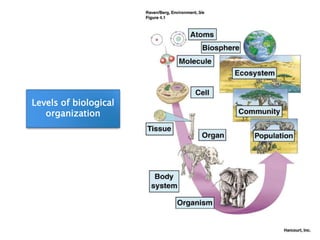Lesson 1 the unit of life 2014 15
- 1. THE UNIT OF LIFE The cell
- 2. How big is a cell?
- 3. Levels of biological organization
- 4. FROM CELLS TO ORGANISMS All complex organisms are made up of a group of systems. All systems are composed of a group of organs. All organs are made of tissues. All tissues are made up of cells.
- 5. MICROSCOPE In order to view and study cells, we had to move further in technology. The development of the microscope allowed us to study and learn more about the smallest forms of life. Everything that cannot be seen with the naked eye is considered microscopic.
- 6. CELL SIZE Microscopic objects are meassured in: ŌŚ” ╬╝m = 10-3 mm ŌŚ” nm = 10-6 mm These are not visible with a naked eye. Eye resolution is 0.2 mm ŌŚ” If two objects are separated by a smaller distance, we will see them as one. Exercise: If an object meassures 1 mm, how many micrometers does it meassure? And how many nanometers?
- 7. ACTIVITY 5 cm Image magnified: 1500 times How large is the Paramecium in reality? 5cm 1500 = 0,0033 cm How many ╬╝m is that? 33 ╬╝m
- 8. ASSIGNMENT Do homework assignment. Google: Cell size and scale (University of Utah) Use this animation available on-line to answer these questions. 1. A human egg is ________ than an amoeba. 2. A red blood cell is ____________ than a yeast. 3. A skin cell is 30 ____ wide. 4. A sperm is _____ micrometers long. 5. An E. coli bacteria is _____ times larger than the hepatitis virus. 6. The smallest organelle is the ___________







